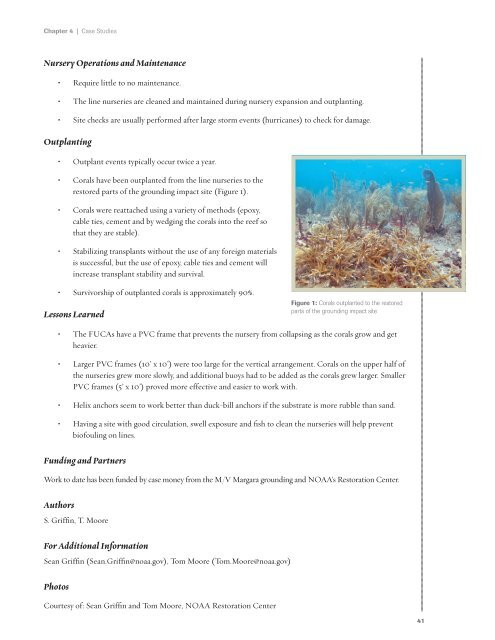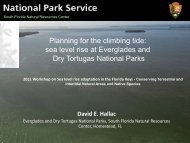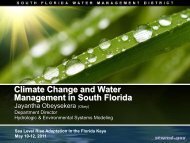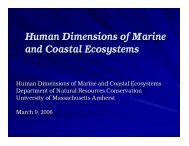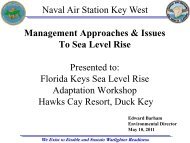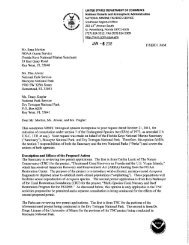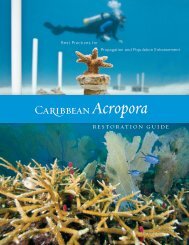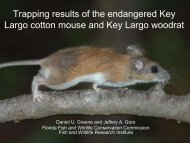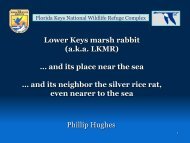Caribbean Acropora Restoration Guide - The Florida Reef ...
Caribbean Acropora Restoration Guide - The Florida Reef ...
Caribbean Acropora Restoration Guide - The Florida Reef ...
You also want an ePaper? Increase the reach of your titles
YUMPU automatically turns print PDFs into web optimized ePapers that Google loves.
Chapter 4 | Case Studies<br />
Nursery Operations and Maintenance<br />
• Require little to no maintenance.<br />
• <strong>The</strong> line nurseries are cleaned and maintained during nursery expansion and outplanting.<br />
• Site checks are usually performed after large storm events (hurricanes) to check for damage.<br />
Outplanting<br />
• Outplant events typically occur twice a year.<br />
• Corals have been outplanted from the line nurseries to the<br />
restored parts of the grounding impact site (Figure 1).<br />
• Corals were reattached using a variety of methods (epoxy,<br />
cable ties, cement and by wedging the corals into the reef so<br />
that they are stable).<br />
• Stabilizing transplants without the use of any foreign materials<br />
is successful, but the use of epoxy, cable ties and cement will<br />
increase transplant stability and survival.<br />
• Survivorship of outplanted corals is approximately 90%.<br />
Lessons Learned<br />
Figure 1: Corals outplanted to the restored<br />
parts of the grounding impact site<br />
• <strong>The</strong> FUCAs have a PVC frame that prevents the nursery from collapsing as the corals grow and get<br />
heavier.<br />
• Larger PVC frames (10’ x 10’) were too large for the vertical arrangement. Corals on the upper half of<br />
the nurseries grew more slowly, and additional buoys had to be added as the corals grew larger. Smaller<br />
PVC frames (5’ x 10’) proved more effective and easier to work with.<br />
• Helix anchors seem to work better than duck-bill anchors if the substrate is more rubble than sand.<br />
• Having a site with good circulation, swell exposure and fish to clean the nurseries will help prevent<br />
biofouling on lines.<br />
Funding and Partners<br />
Work to date has been funded by case money from the M/V Margara grounding and NOAA’s <strong>Restoration</strong> Center.<br />
Authors<br />
S. Griffin, T. Moore<br />
For Additional Information<br />
Sean Griffin (Sean.Griffin@noaa.gov), Tom Moore (Tom.Moore@noaa.gov)<br />
Photos<br />
Courtesy of: Sean Griffin and Tom Moore, NOAA <strong>Restoration</strong> Center<br />
41


